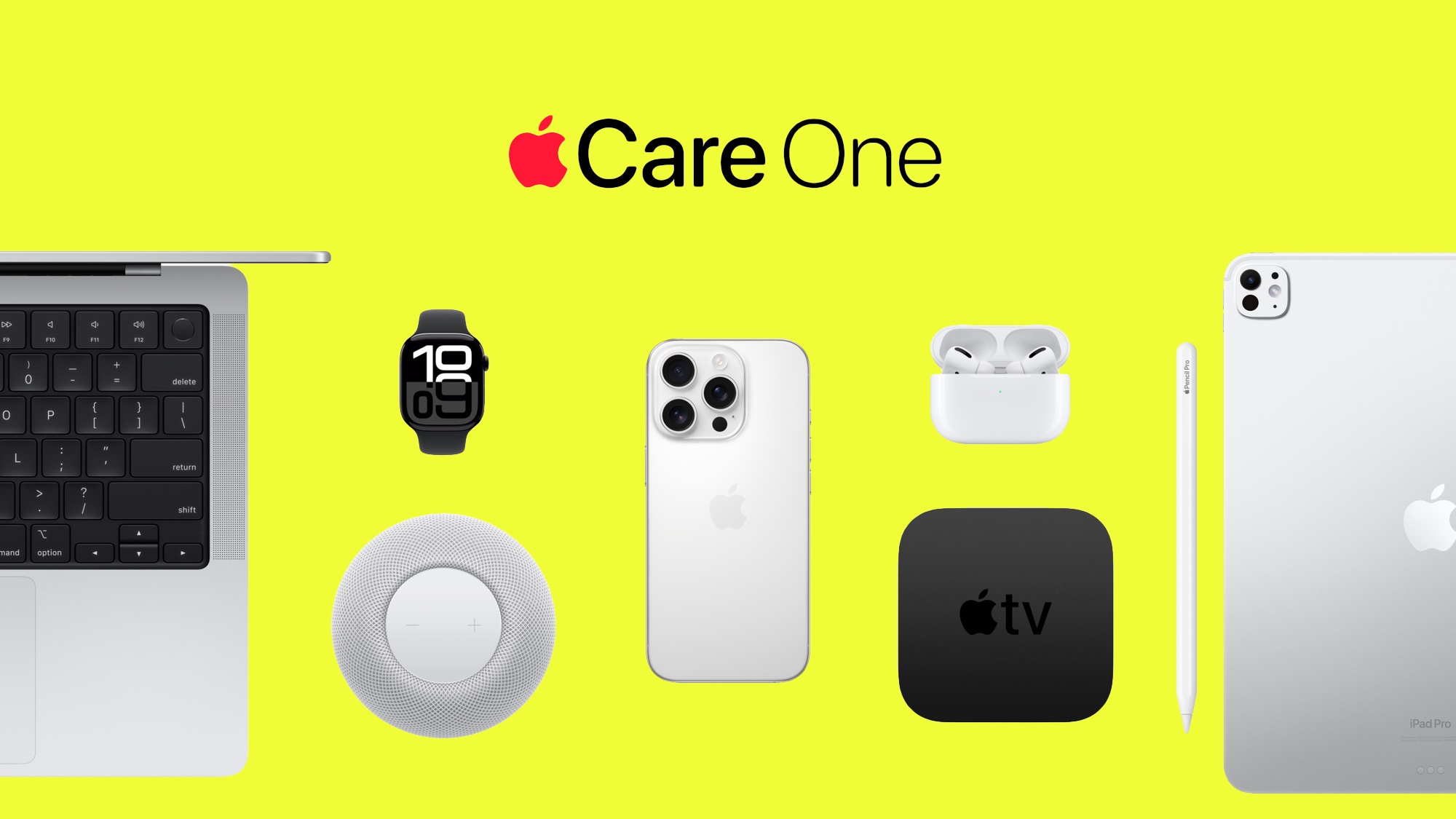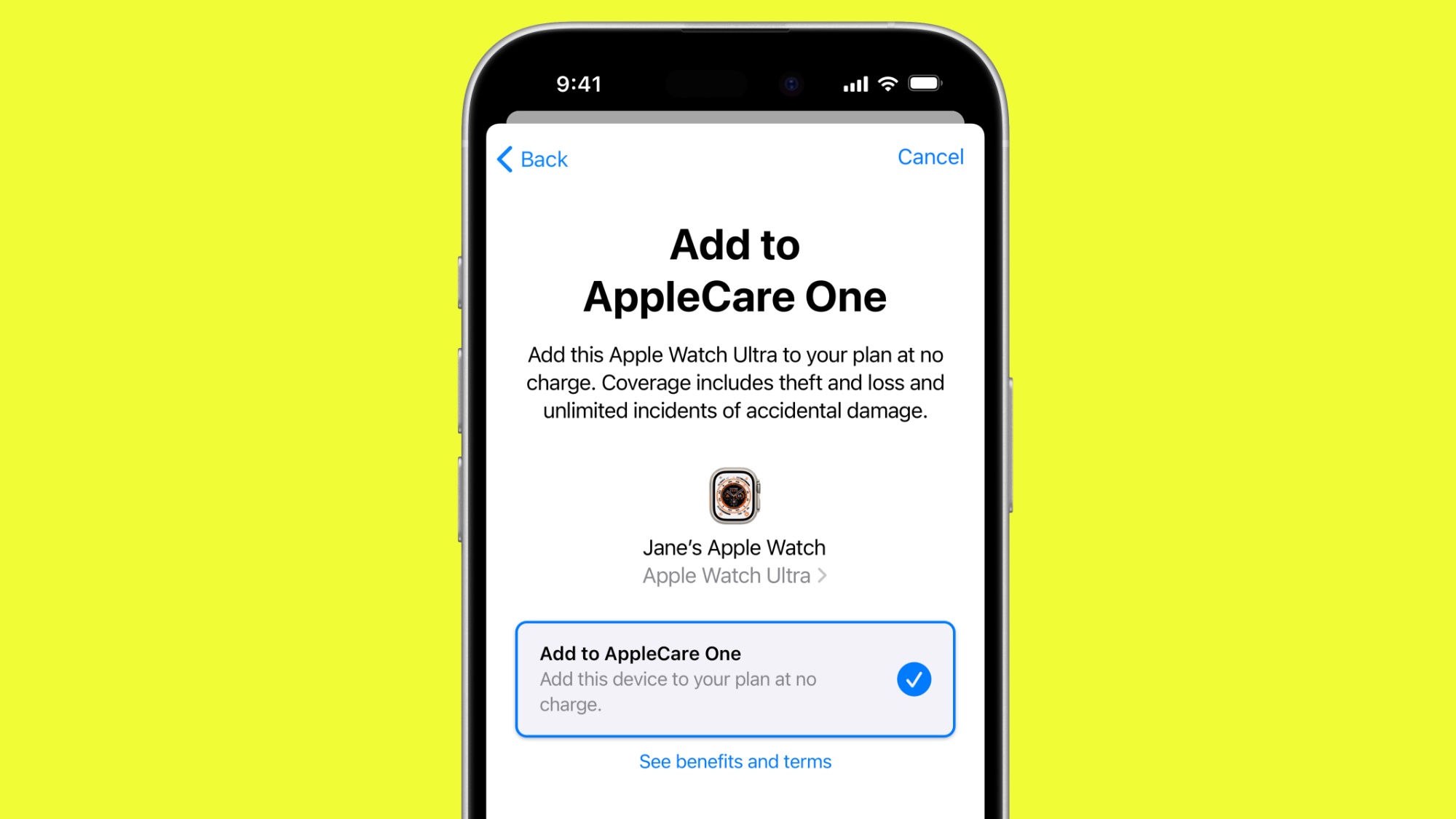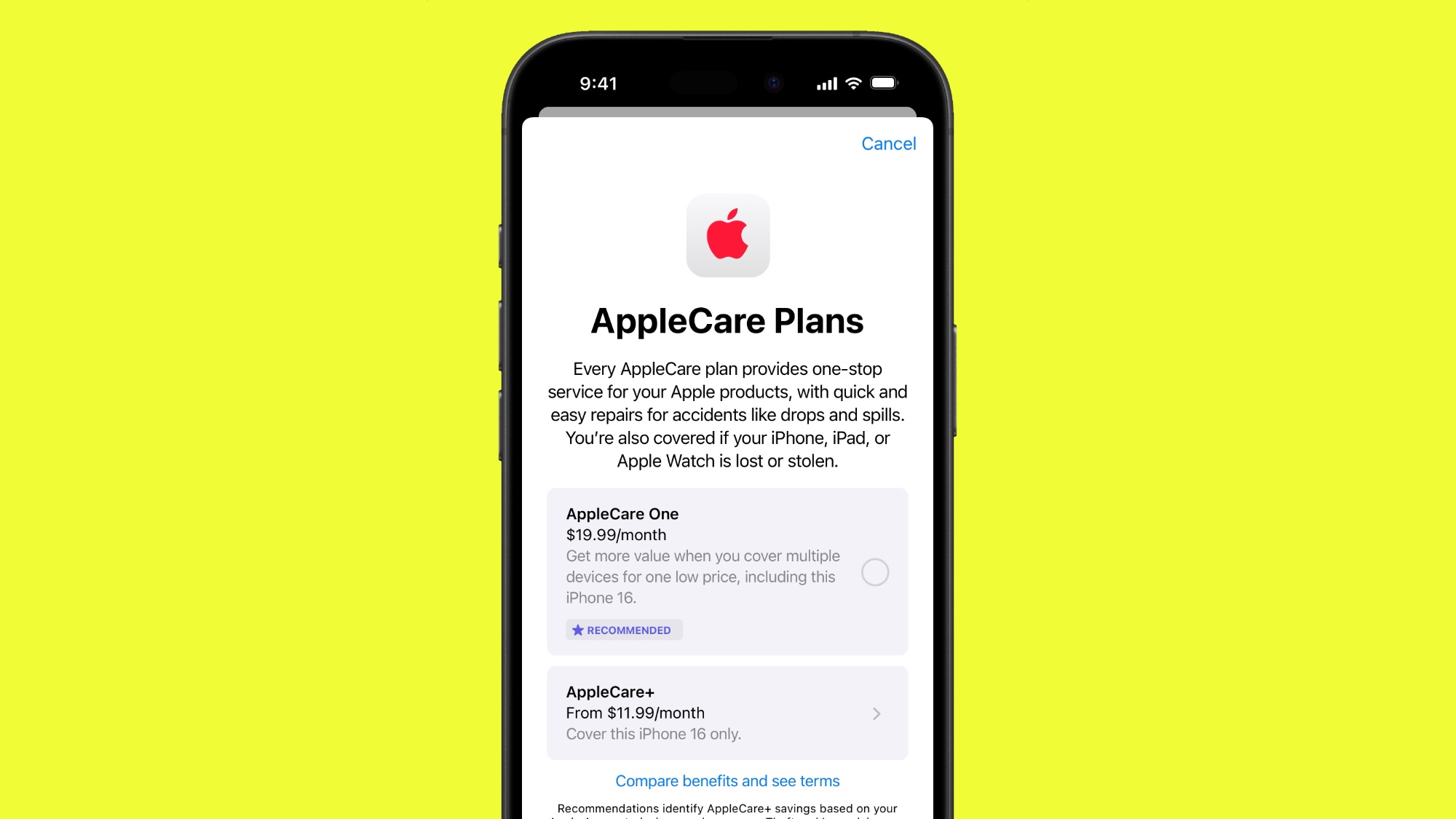Apple announces AppleCare One subscription that covers multiple devices — starts at $19 a month
If you own multiple Apple devices and want to save money, this is the plan to get

If you want to protect your Apple devices from accidents, theft and loss and get priority support, you can now get coverage for multiple Apple products in one plan for one price. And you'll save a bit of money in the process.
The new service is called AppleCare One, which builds on AppleCare+ by letting you protect up to three products tied to your Apple Account for $19.99 a month. It starts rolling out on July 24.
That's not a bad deal considering that AppleCare+ currently costs $11.99 a month for the iPhone 16 and $13.99 a month for the iPhone 16 Pro and Pro Max.
So, for a few bucks more per month, you can add your Apple Watch and iPad. Or your MacBook and AirPods Max. It's up to you. And if you want to protect more than three devices at once, each additional device will cost you an extra $5.99 a month.
You can add already-owned devices

Another plus is that AppleCare One can cover Apple products you already own up to 4 years old. Headphones need to be less than a year old, though. But at least you don't have to buy something new to add it to your plan.
Apple will walk you through the steps virtually to see if your devices are eligible by checking if they're in "good condition." So you don't need to go to an Apple Store.
For the first time, Apple is also extending theft and loss coverage to the Apple Watch and iPad. This will be available to AppleCare One and AppleCare+ customers.
Get instant access to breaking news, the hottest reviews, great deals and helpful tips.
What does AppleCare One cover?
Similar to AppleCare+, AppleCare One includes:
- Unlimited repairs for accidents like drops and spills
- 24/7 priority support from Apple experts
- Quick Apple-certified service
- Battery coverage
- Theft and loss protection for iPhone, iPad and Apple Watch
Note that you cannot add devices from family members to AppleCare One — at least for now. They need to be tied to your specific Apple Account.
How to get AppleCare One

To get AppleCare One, you can sign up at apple.com or when purchasing a device at the Apple Store.
In addition, you can enroll in AppleCare One right from the Settings app on your iPhone, iPad or Mac.
If you trade in your Apple device and upgrade with Apple, you can seamlessly transfer coverage to the new device.
How much can you save with AppleCare One?
By signing up for AppleCare One, you can save a decent amount of money over choosing AppleCare+ for multiple devices.
For example, let's say you want to protect an iPhone 16 Pro, Apple Watch 10 and MacBook Pro M4.
| Row 0 - Cell 0 | AppleCare One | AppleCare Plus |
iPhone 16 Pro | $19.99 a month | $13.99 |
Apple Watch 10 | Inclluded | $2.49 |
MacBook Pro M4 (14-inch) | Included | $9.99 |
Total | $19.99 | $26.47 |
In this scenario, you'd save $6.48 a month. That's a pretty good deal considering you're getting the same amount of coverage.
AppleCare One outlook
Overall, AppleCare One is a no-brainer for those who own multiple Apple devices. You'll save money versus buying AppleCare+ for several gadgets.
I just wish a family could cover Apple devices from multiple Apple Accounts under one AppleCare One plan.
Follow Tom's Guide on Google News to get our up-to-date news, how-tos, and reviews in your feeds. Make sure to click the Follow button.
More from Tom's Guide
- The best iPhones you can buy right now
- 'Earthquake inside Apple' — AI efforts just dealt another major blow
- I test headphones for a living — and my No. 1 travel pick isn't from Bose or Sony
Mark Spoonauer is the global editor in chief of Tom's Guide and has covered technology for over 20 years. In addition to overseeing the direction of Tom's Guide, Mark specializes in covering all things mobile, having reviewed dozens of smartphones and other gadgets. He has spoken at key industry events and appears regularly on TV to discuss the latest trends, including Cheddar, Fox Business and other outlets. Mark was previously editor in chief of Laptop Mag, and his work has appeared in Wired, Popular Science and Inc. Follow him on Twitter at @mspoonauer.
You must confirm your public display name before commenting
Please logout and then login again, you will then be prompted to enter your display name.

